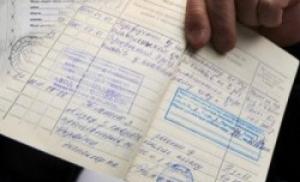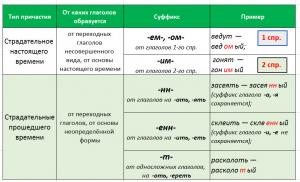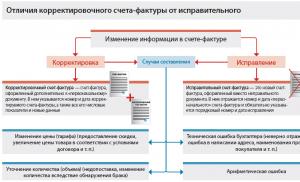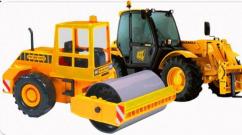The ending en in German. Adjective endings
Adjectives in German bow if and only if they appear before a noun:
Krasn th table - rot er Tisch
red wow stolU - rot em Tisch
There are three types of adjective declension:
- Strong declination.
- Weak declination.
- Mixed declension.
- If an adjective comes before a noun without an accompanying word, then it is inflected according to the strong type.
- If there is an accompanying word, but it ambiguously shows gender, number and case, then the adjective is declined according to the mixed type.
- If there is an accompanying word and it clearly shows gender, number and case, then the adjective is declined according to the weak type.
Strong declination
IMPORTANT!
IN plural words: Viele (many), Einige (several), Wenige (few), Zweie, dreie usw (two, three, etc.) acquire a generic/case ending and do not affect the ending of the adjective ( both parts of speech receive an ending definite article
):
Viel e gut e Eltern (Nom.) - many good parents
Viel e gut e Eltern (Akk.) - many good parents
Wenig en gut en Eltern (Dat.) - to few good parents
Einig er gut er Eltern (Gen.) - some good parents
Weak declension of adjectives

IMPORTANT!
1. In the plural, after the words alle (all), sämtliche (meaning alle) and beide (both) in all cases, adjectives have a neutral ending<-en>, while alle and beide also receive a plural case ending (definite article ending).
Alle mein en Freunde (Nom.)
Alle dein en Freunde (Akk.)
All en dein en Freunde (Dat.)
All er sein en Freunden (Gen.)
2. Definite article, demonstrative pronoun and interrogative pronoun- parts of speech are mutually exclusive and are not used simultaneously with the same noun:
Der gute Vater - Diese gute Mutter (correct)
Der dieser gute Vater - Jede die gute Mutter ( Not Right)
3. Different parts of speech can act as an accompanying word, but all of them clearly show the gender and number of the noun already in Nominativ.

PLEASE NOTE!
In compound demonstrative pronouns (derselbe, derjenige...) the definite article is merged with the demonstrative word, which means both parts of the word are declined. In this case, the article part is declined as a definite article, and the adjective part as an adjective:
D er selb e gut e Film - the same good film
D ie selb en gut en Filme - the same good films
Mixed declension

IMPORTANT!
In the plural, the indefinite article EIN is not used.
Declension of homogeneous adjectives
Homogeneous adjectives standing in front of a noun are declined in the same way:Ein klein es neu es Haus / Das klein e neu e Haus
Klein e neu e Hauser/Die klein en neu en Hauser
Declension of compound adjectives
When an adjective consists of several (it is a multi-root or compound word), the ending is placed only at the end of the word:Mathematisch-naturwissenschaftlich es Thema - strong declension
das mathematisch-naturwissenschaftlich e Thema - weak declension
ein mathematisch-naturwissenschaftlich es Theme - mixed declension
Declension of adjectives before substantivized adjectives
If in a sentence the adjective name describes a substantivized adjective (Der Deutsche, Die Kranke, Die Verwandten), then the ending of the definition is selected according to general rule: either the adjective itself (definition) or the word accompanying it must determine the gender, number and case of the noun. Gender, number and case are shown once in a phrase. In this case, the substantivized adjective receives neutral endings<-е>or<-еn>:Der Kranke - sick
Der arm e Krank e- poor patient
Ein e arm e Krank e- (some) poor patient
ein es arm en Krank en(Genitiv, “Whose?”) - one poor patient (m.r.)
ein er arm en Krank en(Genitiv, “Whose?”) - one poor patient (f.)
Exception! Singular Dativ. If the gender shows an adjective (that is, we have a strong declension), then the substantivized form will have a neutral ending:
Declining adjectives in German is very easy! To do this you need to know three tables and three steps. We will tell you about a method that will accurately help you form the correct ending of any adjective.
Video version of this article for those who like to watch and listen more than read
Step 1: Determine the table number to use
- If the article definite, then you need to look at the first table.

According to the rules of the first table, adjectives with dieser, jeder, jener, alle, manche, solche, welche, derselbe, beide.
- If the article uncertain, then you need to look at the second table.

According to the rules of the second table, adjectives with kein.
- If the article null (absent), then you need to look at the third table.

According to the rules of the third table, adjectives with andere, einige, etliche, folgende, mehrere, verschiedene, viele, wenige.
Step 2: Identify the table column by gender of the noun
Everything is simple here too:
If the noun is masculine, then you need to look in the first column, if it is neuter, then in the second, and so on. There is a separate column for the plural, don't forget!
Step 3: Determine table row by case
It’s a little more complicated here, because we need to determine the case in which the noun appears. Having determined the case, we can find the desired row in the table, and then the cell. Taking from the cell correct example, we inflect the noun and adjective in its likeness.
Let's see one example: Das Dreirad gehört (das, klein) Kind.- The tricycle belongs to a (small) child.
Step 1: Since the article is definite, we need the first table:
Step 2: We are looking for the required column. Because das Kind neuter, we need a second column.
Step 3: We look for the required line, determining the case. gehören + Dativ - to belong to someone, this German verb, like its Russian counterpart, requires the dative case after itself. This means we need a third line.
So, the cell has been found. Now let's decline by substituting the words into the sentence: Das Dreirad gehört dem kleinen Kind .
Ready! Really simple?
Another example: Wir haben (ein, spannend) Film gesehen.- We watched an (interesting) film.
Step 1: Since the article is indefinite, we need a second table:

Step 2: We are looking for the required column. Because der Film masculine, we need the first column.
Step 3: We look for the required line, determining the case. Wir haben (ein, spannend) Film gesehen. - We watched an interesting film. To determine case, we ask a question. Did you watch what? - movie. This is the accusative case, Akkusativ. So we need a second line.
Second line, first column - einen guten Mann. Transferring to our example, we get: Wir haben einen spannenden Film gesehen.
Ready! I think now you have learned how to decline adjectives and are ready to do exercises to consolidate the topic
Download exercises for declension of adjectives according to the first table with answers
Download exercises for declension of adjectives according to the second table with answers
Valeria Zakharova,
The endings (finals) of adjectives (adj.) in German, which are added during declension (cl.), depend on a number of points, namely,
- with which article (art.) is a German noun (noun) used in speech, accompanied by the adj. – with indefinite, with definite or with zero,
- in what number was used? given name noun,
- in which case is this noun used?
- what genus is the thing characterized by the adj. noun
Adjective endings in German I
| Number |
Singular |
|||||
| Genus |
Feminine |
Neutrum |
Maskulinum |
|||
| Article | undefined | def. | undefined | def. | undefined | def. |
| Translation | gray blouse | new trail | old track | left leg | wise old man | right foot |
| No. | eine graue Bluse | die neue Spur | ein altes Gleis | das link Bein | ein weiser Greis | der rechte Fuss |
| Gen. | einer grauen Bluse | der neuen Spur | eines alten Gleises | des Linken Beines | eines weisen Greises | des rechten Fusses |
| Dat. | einer grauen Bluse | der neuen Spur | einem alten Gleis | dem linken Bein | einem weisen Greis | dem rechten Fuss |
| Akk. | eine graue Bluse | die neue Spur | ein altes Gleis | das link Bein | einen weisen Greis | den rechten Fuss |
Adjective endings in German II
|
Singular |
Plural |
||||
| Art. | zero Femin. | null Neutr. | null Mask. | null | def. |
| No. | gray blue | altes Gleis | Weiser Greis | graue Blusenalte Gleise weise Greise |
die neuen Spurendie linken Beine die rechten Fusse |
| Gen. | grauer Bluse | Alten Gleises | Weisen Greises | grauer Blusenalter Gleise Weiser Greise |
der neuen Spurender linken Beine der rechten Fusse |
| Dat. | grauer Bluse | altem Gleis | Weisem Greis | grauen Blusenalten Gleisen weisen Greisen | den neuen Spurenden linken Beinen den rechten Fussen |
| Akk. | gray blue | altes Gleis | Weisen Greis | graue Blusenalte Gleise weise Greise | die neuen Spurendie linken Beine die rechten Fusse |
Note to the table:
- gray background = weak sk.
- reddish background = strong darkening
- white background = mixed color
Weak declination
When using a noun with a certain art. The adjective that defines a given noun acquires the ending. according to the weak type. This type of storage characterized by the presence of only two endings – “-e” and “-en”. Finish “-e” is acquired only by adj. in Singular Nominativ (all three genders) and in Akkusativ (neuter and feminine) (see examples above in gray). Adj. will also purchase final by weak type, if a certain art. replace pronouns (places), which clearly convey the grammatical categories of the noun. To such places. include indicative places. this one is dieser, this one is solcher, that one is jener, each is jeder, some is mancher, that same one is derjenige, the same one is derselbe, interrogative place. which - welcher (plus all corresponding feminine and neuter places, as well as plurals from the named groups); pronouns both – beide, all – alle.
Strong declination
When using a noun with a zero art. (and also in the absence of any replacing this art. pronouns) relating to a noun adj. acquires final according to the strong type, that is, in all cases it takes the final form. definite articles (except neuter and masculine in Genitiv - see examples in the tables above on a reddish background). Adjectives are declined according to the same type if, when defining nouns, they occupy a place after cardinal numerals (for example, ten - neun, six - sechs, etc.) and places. many - viele, various, some - mehrere, some - wenige, all - sämtliche, etc.
Mixed declension
After unspecified art. (see examples in the table above on a white background), places. kein and possessive pronouns adj. They tend to be mixed, combining the characteristics of both the weak and the strong. Its peculiarity compared to the other two types of cl. described above. is that mixed cl. is present only in the singular. Plural adjectives following possessives. and after keine, acquire the same endings as after definite articles.
02/26/2014 WEDNESDAY 00:00
GRAMMAR
The declension of adjectives - Deklination der Adjektive - is determined not only by gender, number and case of the noun to which the adjective refers. It is also determined by the accompanying word - article, pronoun, numeral, etc. - comes before a noun. Depending on this, there are strong, weak and mixed declension of adjectives.
In this article we will look at each of these declensions.
Strong declension of adjectives
There is no accompanying word before the adjective or the accompanying word is not capable of giving grammatical characteristics to the noun - gender, number and case. In this case, the adjective takes on the functions of an article and takes on the endings of the definite article.
|
Singular |
|||
|
Masculine |
|||
|
stark er Kaffee |
schön es Wetter |
frisch e Milch |
|
|
stark en Kaffees |
schön en Wetters |
frisch er Milch |
|
|
stark em Kaffee |
schön em Wetter |
frisch er Milch |
|
|
stark en Kaffee |
schön es Wetter |
frisch e Milch |
|
|
Plural |
|||
|
schön e Fenster |
einige gut e Freunde |
vier neu e Autos |
|
|
schön er Fenster |
einiger gut er Freunde |
vier neu er Autos |
|
|
schön en Fenstern |
einigen gut en Freunden |
vier neu en Autos |
|
|
schön e Fenster |
einige gut e Freunde |
vier neu e Autos |
|
Weak declension of adjectives
An adjective is preceded by an accompanying word - the definite article or the word that replaces it - and it clearly determines the gender, number and case of the noun.
|
Singular |
|||
|
Masculine |
Neuter |
Feminine |
|
|
der gut e Freund |
das gut e Buch |
die gut e Freundin |
|
|
des gut en Freundes |
des gut en Buches |
der gut en Freundin |
|
|
dem gut en Freund |
dem gut en Buch |
der gut en Freundin |
|
|
den gut en Freund |
das gut e Buch |
die gut e Freundin |
|
|
Plural |
|||
|
die gut en Bucher |
diese gut en Bucher |
meine neu en Autos |
|
|
der gut en Bucher |
diesel gut en Bucher |
meiner neu en Autos |
|
|
den gut en Buchern |
diesen gut en Buchern |
meinen neu en Autos |
|
|
die gut en Bucher |
diese gut en Bucher |
meine neu en Autos |
|
Mixed declension of adjectives
An adjective is preceded by an accompanying word in the form indefinite article ein - only in the singular, or possessive pronouns mein, dei n, etc. or the indefinite pronoun kein.
|
Singular |
|||
|
Masculine |
Neuter |
Feminine |
|
|
ein gut er Freund |
ein gut es Buch |
eine gut e Freundin |
|
|
eines gut en Freundes |
eines gut en Buches |
einer gut en Freundin |
|
|
einem gut en Freund |
einem gut en Buch |
einer gut en Freundin |
|
|
einen gut en Freund |
ein gut es Buch |
eine gut e Freundin |
|
|
Plural |
|||
|
keine gut en Freunde |
gut e Freunde |
meine gut en Freunde |
|
|
keiner gut en Freunde |
gut er Freunde |
meiner gut en Freunde |
|
|
keinen gut en Freunden |
gut en Freunden |
meinen gut en Freunden |
|
|
keine gut en Freunde |
gut e Freunde |
meine gut en Freunde |
|
Since the indefinite article is not used in the plural, adjectives, when inflected with a noun without an article, receive strong plural endings.
After possessive pronouns mein, dein, etc. and the indefinite - negative - pronoun kein, plural adjectives have weak declension forms.
Unlike a noun, where each noun belongs to one or another type of declension, an adjective as a definition can be declined only by strong or weak declination. The type of declension depends on the composition of the vocabulary in which the adjective occurs.
By weak declination adjectives are declined in the following vocabulary connectives:
1. In the singular after a definite article der, die, das or demonstrative pronoun dieser (dieses,diese).
In the plural after alle, beide, sämtliche, negative pronoun kein and possessive pronouns.
| Maskulinum | Feminine | |
| Nom | der (dieser) gut e Freund | die (diese) rot e Ampel |
| Gen | des (dieses) gut en Freundes | der (dieser) rot en Ampel |
| Dat | dem (diesem) gut en Freund | der (dieser) rot en Ampel |
| Akk | den (diesen) gut en Freund | die (diese) rot e Ampel |
| Neutrum | Im Plural | |
| Nom | das (dieses) neu e Auto | alle (meine)neu en Autos |
| Gen | des (dieses) neu en Autos | aller (meiner) neu en Autos |
| Dat | dem (diesem) neu en Auto | Allen (meinen) neu en Autos |
| Akk | das (dieses) neu e Auto | alle (meine) neu en Autos |
2. After the indefinite article ein, eine, negative pronoun kein and possessive pronouns(singular).
| Maskulinum | Feminine | Neutrum | |
| Nom | ein (mein) gut er Freund | eine (Ihre) grün e Wiese | ein (main) neu es Auto |
| Gen | eines (meines) gut en Freundes | einer (Ihrer)grün en Wiese | eines (meines) neu en Autos |
| Dat | einem (meinem) gut en Freund | einer (Ihrer) grün en Wiese | einem (meinem) neu en Auto |
| Akk | einen (meinen) gut en Freund | eine (Ihre) grün e Wiese | ein (main) neu es Auto |
3. In units h. without accompanying words.
In plural h. without accompanying words and after cardinal numbers.
| Maskulinum | Feminine | |
| Nom | warm er Kaffee | warm e Milch |
| Gen | warm en Kaffees | warm er Milch |
| Dat | warm em Kaffee | warm er Milch |
| Akk | warm en Kaffee | warm e Milch |
| Neutrum | Im Plural | |
| Nom | kalt es Wasser | kühl e Tag / drei schwarz e Katzen |
| Gen | kalt en Wassers | kühl er Tag / drei schwarz er Katzen |
| Dat | kalt em Wasser | kühl en Tagen / drei schwarz en Katzen |
| Akk | kalt es Wasser | kühl e Tag / drei schwarz e Katzen |
Table “Declination of adjectives in German”
Exercises on the topic “Declination of adjectives in German” / ÜBUNGEN
1. Read, determine the gender and case of the adjectives in bold. Translate these sentences.
2. Read the following text, inserting the appropriate endings of the adjectives.
Im Zug
Es ist ein schön__, warm__ Tag. Der Zug fährt nach Berlin. Auf einer klein__ Station setzt sich ein neu__ Fahrgast neben einen solid__ Herrn und fragt ihn:
— Fahren Sie auch nach Berlin?
—Nein.
— Dann fahren Sie nach Leipzig?
- Ja.
— Fahren Sie auf Urlaub?
—Nein.
— Dann ist das eine kurz__ Dienstreise?
- Ja.
— Was sind Sie von Beruf?
Da sagt der Nachbar ärgerlich:
- Mein Herr, ich bin Ingenieur. Ich bin 42 Jahre alt und bin ein Meter 78 groß. Schuhgröße 41. Mein Vater lebt nicht mehr, meine Mutter ist 68 Jahre alt. Ich bin verheiratet. Meine Frau ist Ärztin. Im nächsten Monat wird sie 40. Wir haben zwei schön__ Kinder: eine vierzehnjährig__ Tochter und einen zehnjährig__ Sohn. Wir haben ein groß__ Eigenheim mit einer groß__ Garage. Das Haus steht in einem klein__ Garten. Wir haben einen modern__ Wagen. Ich trinke heiß__ Tee mit Zucker gern. Wollen Sie noch etwas wissen?
Alle Fahrgäste lachen. Aber der neu__ Fahrgast fragt:
— Ich möchte gern noch wissen: wie heißen Sie?
— Ich habe einen kurz__ Namen: ich heiße Lang.













